Last Updated on December 29, 2021
Summer has finally arrived, and you are enroute to the beach for a much anticipated family vacation. All is well, and you are only a few short hours from your destination when the unexpected brings your travel to an abrupt halt. As the reading presented by your vehicle’s temperature gauge begins to skyrocket, you realize that something is amiss.
A quick glance beneath your vehicle’s hood reveals a lack of coolant in the cooling system’s overflow reservoir, indicating an apparent leak. While the nearest store within walking distance does not stock coolant, the store’s clerk counters by offering several gallons of water to top off your vehicle’s cooling system.
This poses an intriguing question. Can you put water in your vehicle’s radiator or cooling system in the case of an emergency, and does doing so pose any risk to your vehicle’s engine?
Read on to learn more about the use of water in automotive cooling systems, as well as how to properly handle such roadside emergencies if faced in the future.
Related: Losing Coolant But Not Visible Leaks?
What Happens If You Use Water Instead of Coolant?
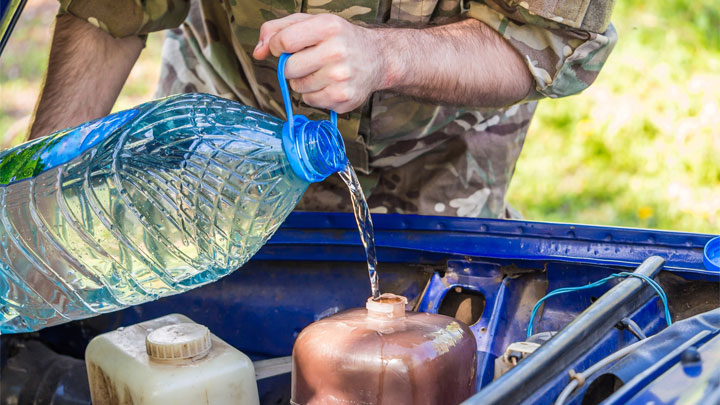
In the vast majority of cases, it is completely safe to refill your vehicle’s cooling system with water, in the event of an emergency. However, before doing so, it is important to understand that water offers no freeze protection, and also boils at lower temperatures than antifreeze.
Therefore, water should only be used as a temporary substitute for coolant. A vehicle’s cooling system should be refilled with the appropriate coolant as soon as all underlying leaks have been repaired. A failure to replace this water, with the proper coolant type, can lead to a host of troubling issues with time.
Over extended periods, the use of water can lead to the development of corrosion within a vehicle’s cooling system. As this corrosion continues to worsen, issues with overheating can be exuberated, as particles of rust clog cooling passages and restrict radiators.
Once this cycle of corrosion begins, it can be quite difficult to stop, leading to years of overheating issues.
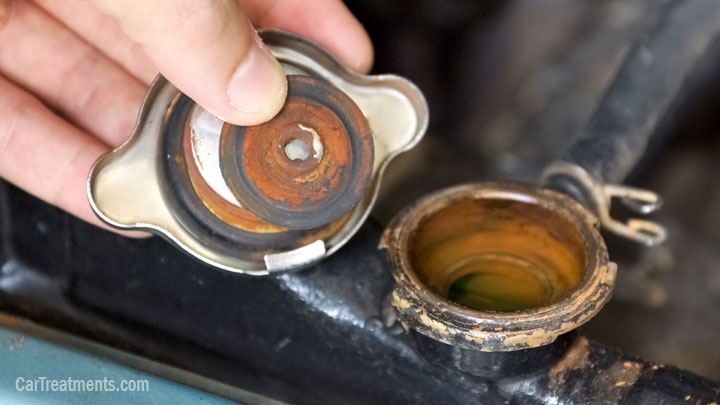
Water should also be drained from an engine prior to the onset of cold weather, as water offers no freeze protection. When water freezes, it expands, taking up a significantly larger volume than when in its liquid state.
Though most engines do feature freeze-plugs, which are intended to relieve the pressure of this expansion, the freezing of water within an engine’s cooling system still poses a high risk of damage.
Engine blocks and cylinder heads have been known to crack or rupture under the stress imposed by the expansion of freezing water. Likewise, radiators seldom stand a chance when faced with such expansion.
Ultimately, issues of this variety will often prove far more problematic than those which led to your engine’s initial coolant leak.
Read Also: Freezing Temps of Common Car Fluids
Does the Type of Water Matter?

Though water of any type is never intended for extended (by itself) within an engine’s cooling system, some types of water are more friendly for such uses than others. This is due to the fact that certain types of water pose a greater risk of creating corrosion and scale build-up within the cooling system.
Whenever possible, the use of ordinary tap water for such purposes should be avoided. Tap water contains numerous minerals that are catalysts for corrosion. Therefore, the use of tap water within an engine’s cooling system can lead to the accelerated build-up of problematic deposits, in turn, compounding overheating-related issues.
In order to avoid the issues presented by tap water, soft or purified water should be used as an alternative, whenever possible. However, one can make use of distilled or bottled water for the same purpose, if such products happen to be readily available.
Use:
- Purified Water
- Soft Water
- Distilled Water
Don’t Use:
- Tap Water
- Spring Water
Will a Car Overheat With Just Water in the Radiator?
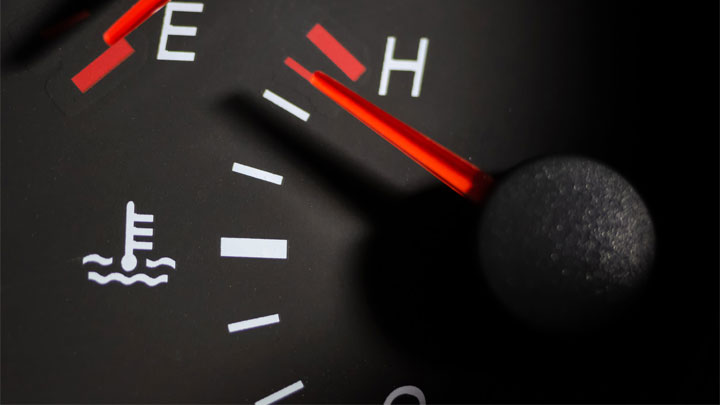
Although water is relatively efficient at keeping an engine cool, it does have a somewhat lower boiling point than coolant. Water boils at a temperature of 212° F, while 50/50 coolant boils at 223° F.
While this discrepancy seems somewhat minor, it is significant enough to make coolant far more effective in preventing boil-over than water. Therefore, the use of water alone, within a vehicle’s cooling system, leaves an engine susceptible to overheating in strenuous or demanding circumstances.
While such inefficiencies might not be evident at cruising speeds, motorists should remain keen on the fact that an engine is not adequately protected against overheating when running pure water in its cooling system.
Should I Pour Water On My Engine to Cool It Down?
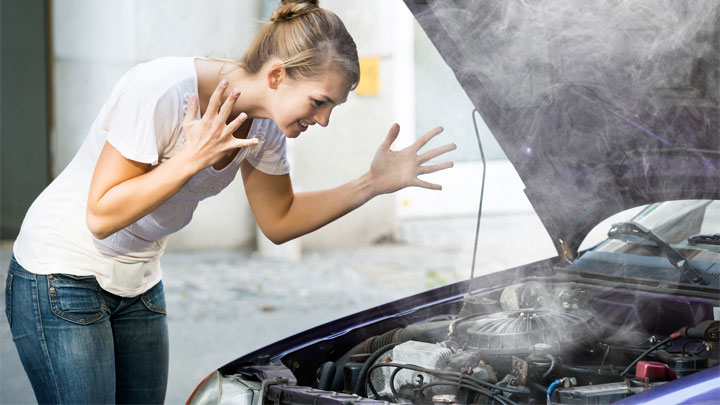
When an engine overheats, the vast majority of motorists are fixated on providing additional cooling by any means necessary. However, one can do more harm than good by springing into action, without considering the possible consequences. Pouring cold water on an overheated engine serves as a prime example.
The reason for this is quite simple. Metal, such as that which makes up an engine’s block and cylinder heads, expands when heated. Upon cooling, this metal will contract to its normal state.
Metal is able to sustain these fluctuations when heating/cooling occurs gradually. On the other hand, rapid heating or cooling can cause metal surfaces to crack in one or more places.
Dumping cool water onto an overheated engine is a leading cause of thermal shock-related damage. The sudden cooling provided by pouring water onto an engine, causes its block and cylinder heads to rapidly contract.
More often than not, this will lead to the development of one or more cracks in an engine’s vital structural components. Damage of this nature can be quite costly to repair, and can even exceed the overall value of a vehicle itself.
See Also: What Causes a Radiator Hose to Collapse?
How to Safely Top Up Coolant in Radiator With Water
Though water can be used to top off a vehicle’s cooling system in the event of an emergency, several special steps should be taken when attempting to complete such a task.
The following steps, when followed, will assist you in safely adding water to your engine’s radiator.
Related: 3 Reasons Why You Shouldn’t Overfill Your Coolant Reservoir Tank
#1 – Let Engine Cool
Water should never be added to a warm engine. On the contrary, one should allow their engine to cool to ambient temperature, before attempting to top off the system.
#2 – Remove Cap
With the engine cooled, you will now remove the fill cap to your engine’s cooling system. In some applications, this cap will be found along the upper radiator tank, while other systems will be capped at a remote overflow reservoir.
In any event, this cap should be opened slowly, with the use of a rag or towel covered hand. You DO NOT want scalding hot coolant spraying on your hands, arms, or even face.
#3 – Add Water
Water should be added slowly to any cooling system, allowing as much air to escape from the system itself as possible.
Most overflow reservoirs are stamped with a “full” mark, which will provide visual confirmation as to the level of fluid within the system.
Alternatively, systems without a radiator should be filled until reaching a level just beneath the radiator’s fill neck.
#4 – Burp System
With water added, it will now be time to “burp” your engine’s cooling system of air. This is accomplished by letting the engine idle, with the system’s fill cap still removed. You should notice small bubbles being expelled upward through the water contained within the system.
Burping should continue until the engine has heated sufficiently enough, to allow the system’s thermostat to open. At this point, water again will be added as necessary, and the system’s fill cap will be reinstalled.
#5 – Keep A Watchful Eye
When driving, one should keep an eye on their vehicle’s temperature gauge, in a bid to identify the earliest signs of overheating. Identifying the root cause of your engine’s initial coolant loss should also take precedence.
Once all repairs are made, water should be drained from the system, and the appropriate coolant added. Be sure to consult your vehicle’s owner’s manual, when determining the types of coolant that are acceptable for use.


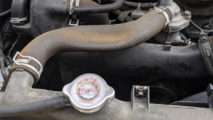
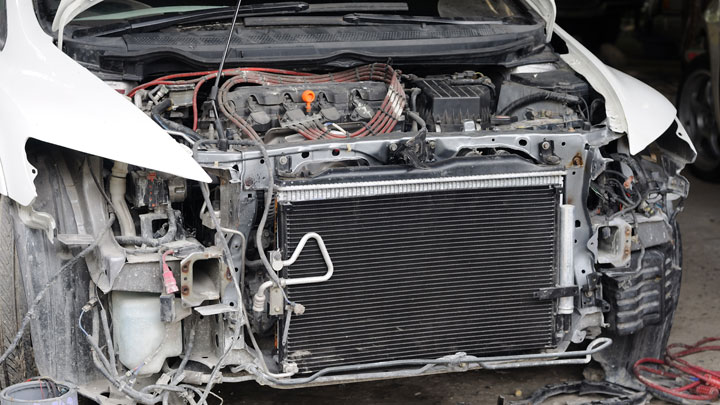
I am trying to get home from work and i have to pour coolant and water into my radiator i have never done this before so its all new to me and not sure what would happen but i really wanna get home can i have water in there to get me home i live 23 miles away from work?
Distilled water is fine in the radiator. Don’t open the radiator cap or any other part of the pressurized system while the car is hot.
My car is overheating and the coolant level is below the minimum mark. I’ve ordered the correct coolant online but it won’t be here for a couple of days. I really need to use my car though, so can I add some distilled water now and then add the same amount of coolant in a couple of days?
Thanks 🙏
Yes, you can absolutely run distilled water. If you are only running distilled water (without any antifreeze at all), you might want to add some water wetter for some additional rust protection. Water wetter will also lubricate the water pump, which is typically one of the jobs antifreeze does. If you just add a little distilled water, you don’t need to worry about this step at all.
Make sure you understand why your car overheated. Repeated overheating can cause other expensive engine damage, like a blown head gasket or warped head. Try not to let the car overheat anymore once you discover the problem.